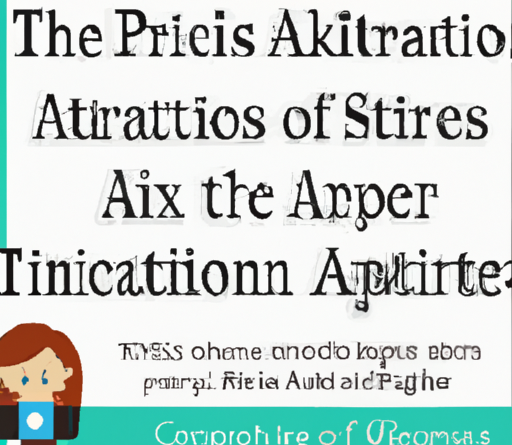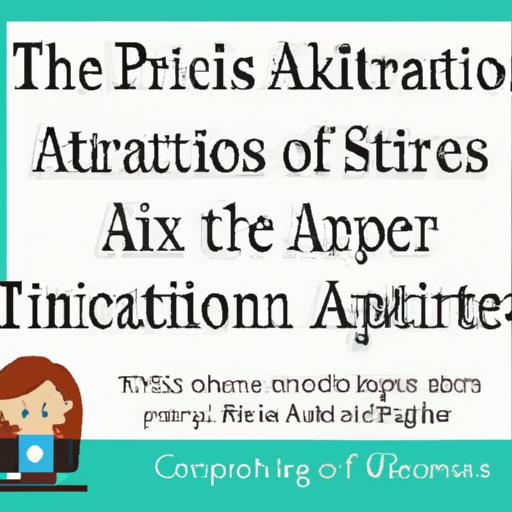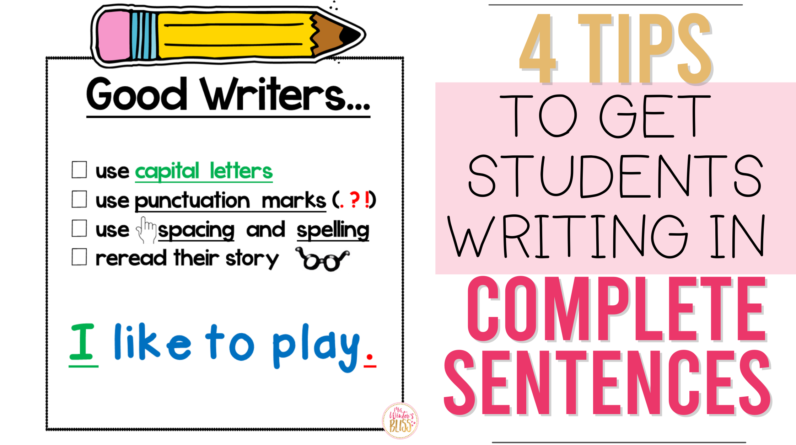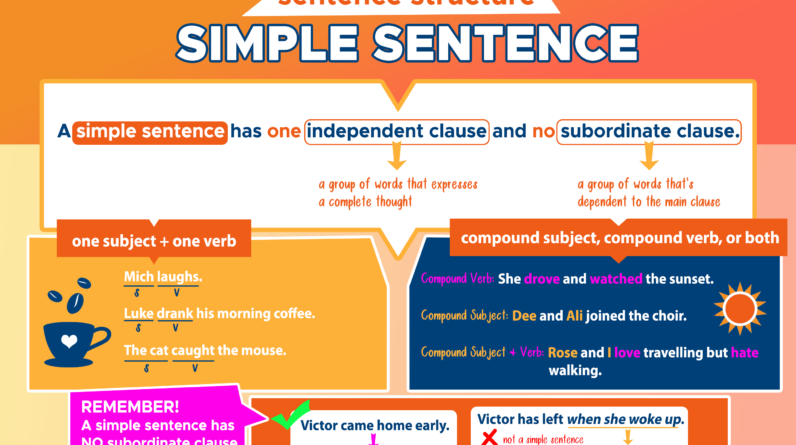
Hi there! In this article, we’ll be talking about how to properly use in-text citations in APA format. We’ll provide you with some helpful tips and guidelines so you can easily include citations in your academic papers. By the end of this article, you’ll have a clear understanding of how to use in-text citations according to APA style. So let’s get started and learn how to make your references and citations shine!
Table of Contents
How to Properly Use In-Text Citations in APA Format
In academic writing, it is important to support your ideas and arguments with credible sources. One of the ways to do this is by using in-text citations, which provide a brief reference to the source of information within the body of your paper. In this article, you will learn the basics of in-text citations in APA format, including their importance, guidelines for formatting, and how to avoid common mistakes.
What are in-text citations?
In-text citations are used to acknowledge the source of information that you have borrowed from another author. They are placed within the text of your paper, usually in parentheses, and typically include the author’s last name and the year of publication. In-text citations not only give credit to the original author but also enable readers to locate the source if they want to explore the topic further.
Importance of using in-text citations
Using in-text citations is essential for several reasons. Firstly, they provide evidence for your arguments and give credibility to your paper by showing that you have conducted thorough research. Secondly, they allow readers to verify your claims and delve deeper into the topic by referring to the original source. Lastly, using in-text citations demonstrates academic integrity by acknowledging the intellectual property of others and avoiding plagiarism.
Difference between in-text citations and references
While both in-text citations and references serve the purpose of crediting sources, they are used in different ways. In-text citations are used within the body of your paper to indicate where a specific piece of information or idea originated from. References, on the other hand, are listed at the end of your paper and provide complete bibliographic information about the sources you have cited. Think of in-text citations as signposts that lead readers to the full reference in the reference list.
Basic Guidelines for In-Text Citations in APA Format
Placement of in-text citations
In-text citations should be placed immediately after the information you have borrowed from a source, whether it is a direct quote, a paraphrase, or a summary. They are typically enclosed in parentheses and follow the punctuation mark at the end of the sentence. If you mention the author’s name in the sentence, you only need to include the year of publication in the parentheses.
Formatting in-text citations
In APA format, the basic format for in-text citations is (Author, Year). If there are multiple authors, list them all in the same parentheses, separated by commas, and use an ampersand (&) before the last author’s name. If there is no author, use the title of the source or the organization responsible for the content. If there is no publication date available, use the abbreviation “n.d.” (no date) instead.
Citing multiple authors
When citing multiple authors in an in-text citation, it is important to use the correct format. For sources with up to two authors, include both names in the parentheses. For sources with three or more authors, use the first author’s name followed by “et al.” (which is Latin for “and others”). It is important to note that in the reference list, all authors should be listed.

Citing Different Sources in APA Format
Citing books and articles
When citing a book in APA format, include the author’s last name and the year of publication. If you are citing a specific page or a range of pages, include the page number(s) as well. For example:
- (Smith, 2019)
- (Smith, 2019, p. 25)
- (Smith & Johnson, 2020)
- (Smith et al., 2021)
When citing an article, use the same format as a book citation but include the article title in quotation marks and the title of the journal or magazine in italics. For example:
- (Brown, 2018)
- (“The Effects of Climate Change,” 2018)
- (Brown & Johnson, 2019)
- (Brown et al., 2020)
Citing websites and online sources
When citing a website or an online source, include the author’s last name (or the organization’s name), the year, and the title of the web page or article. If there is no page number, include a paragraph number or section heading instead. For example:
- (Smith, 2021)
- (Smith, 2021, para. 2)
- (Smith, 2021, “Methods” section)
Citing sources with no author or date
If a source has no author, use the title of the source in the in-text citation. If the source has no publication date, use “n.d.” (no date) in place of the year. For example:
- (“Effects of Pollution,” n.d.)
- (“The Use of Technology in Education,” n.d.)
Using Signal Phrases in In-Text Citations
What are signal phrases?
Signal phrases are phrases or clauses that introduce a quotation, paraphrase, or summary in your paper. They are used to explicitly attribute the borrowed information to the original source and to seamlessly integrate it into your writing. Using signal phrases helps to establish the credibility of your work and shows that you have engaged with relevant literature.
Importance of signal phrases
Signal phrases serve as a bridge between your own ideas and the ideas of others. By using signal phrases, you indicate to your readers that the following information is a direct quote, a paraphrase, or a summary from another source. This helps to prevent confusion and demonstrates your understanding of the material.
Examples of signal phrases
Here are some examples of signal phrases that you can use in your writing:
- According to Smith (2018),
- In a study conducted by Johnson et al. (2020),
- As Brown (2019) argues,
- According to the American Psychological Association (APA, 2021),
- In their research, Smith and Johnson (2021) found that,
These signal phrases can be tailored to fit the specific context of your paper and can help to seamlessly integrate your in-text citations into your writing.

Avoiding Plagiarism with In-Text Citations
Understanding plagiarism
Plagiarism is the act of using someone else’s work or ideas without giving them proper credit. It is a serious academic offense and can result in severe consequences. Plagiarism can occur when you fail to properly cite your sources, whether intentionally or unintentionally. It is important to understand the different types of plagiarism and how to avoid them.
Consequences of plagiarism
The consequences of plagiarism can vary, but they can be detrimental to your academic and professional career. In academia, plagiarism can lead to failing grades, academic probation, or even expulsion from a school or university. In professional settings, plagiarism can damage your reputation, result in legal action, and have long-lasting consequences for your career.
How in-text citations help prevent plagiarism
In-text citations are key to preventing plagiarism. By properly citing your sources within the body of your paper, you are giving credit to the original author and acknowledging their intellectual property. In addition, in-text citations provide a clear trail for readers to follow if they want to verify your claims or learn more about the topic. By including in-text citations, you are demonstrating academic integrity and avoiding the risk of unintentional plagiarism.
Common Mistakes to Avoid in In-Text Citations
Overuse of direct quotations
Direct quotations should be used sparingly and only when necessary. Overusing direct quotations can make your writing appear choppy and can undermine your own voice as the author. Instead, strive to paraphrase and summarize information in your own words, using in-text citations to give credit to the original source.
Missing in-text citations
Failing to include in-text citations for borrowed information is a common mistake that can lead to plagiarism. Always remember to include a reference to the source of the information, whether it is a direct quote, a paraphrase, or a summary. Even if you are summarizing or paraphrasing a source, you still need to provide an in-text citation to acknowledge where the information originated.
Incorrect formatting of citations
APA format has specific guidelines for formatting in-text citations, including the placement of parentheses, the use of commas, and the inclusion of page numbers. It is important to familiarize yourself with these guidelines to avoid making formatting errors. Using a reliable APA style guide or referencing online resources can help ensure that your in-text citations are correctly formatted.
Including Page Numbers in In-Text Citations
When to include page numbers
Page numbers should be included in in-text citations when quoting directly from a source or when referring to a specific passage or idea within a source. Including page numbers helps readers locate the exact information you are referencing and adds credibility to your work. If the source does not have page numbers, such as a website or an online article, you can use paragraph numbers or section headings instead.
How to format page numbers
In APA format, page numbers are typically formatted as “p.” for a single page or “pp.” for multiple pages. They should be preceded by a comma and placed immediately after the year in the in-text citation. For example:
- (Smith, 2022, p. 15)
- (Smith, 2022, pp. 20-25)
Alternative methods when no page numbers are available
In some cases, sources may not have page numbers, such as online articles or web pages. In such instances, you can use alternative methods to indicate the location of the information. One option is to use paragraph numbers. For example:
- (Smith, 2022, para. 5)
If paragraph numbers are not available, you can use section headings or subheadings. For example:
- (Smith, 2022, “Methods” section)
Always remember to include enough information in the in-text citation to allow readers to locate the specific information within the source.
Using In-Text Citations for Paraphrases and Summaries
How to cite paraphrases
When paraphrasing information from a source, you are expressing the ideas or information in your own words. However, it is still important to provide an in-text citation to give credit to the original author. To cite a paraphrase, use the author’s last name and the year of publication, just like you would for a direct quote. For example:
- (Smith, 2023)
How to cite summaries
Summaries are an effective way to condense information from a source while retaining the main points. When summarizing information, you should still provide an in-text citation to acknowledge the original source. Again, use the author’s last name and the year of publication. For example:
- (Smith, 2023)
Examples of citing paraphrases and summaries
Here are some examples of how to cite paraphrases and summaries using in-text citations:
- According to Smith (2023), the study found that…
- Smith (2023) summarizes the main points by stating…
- In a study conducted by Smith (2023), it was concluded that…
Remember to provide an in-text citation whenever you are referring to information that originated from a source, whether it is a paraphrase or a summary.
In-Text Citations for Specific Situations
Citing interviews and personal communications
Interviews and personal communications require a slightly different format for in-text citations. For interviews, include the interviewee’s name, the type of communication (e.g., personal interview, telephone interview), and the date of the interview. For personal communications, include the person’s name and the specific communication (e.g., personal communication, email, letter). For example:
- (Doe, personal communication, January 1, 2022)
Citing online videos and multimedia
When citing online videos, such as those found on platforms like YouTube, include the name of the person or organization responsible for the video, the year of publication, and the title or description of the video. If a specific timestamp is relevant, include that as well. For example:
- (Smith, 2022, How to Properly Use In-Text Citations in APA Format, 3:45)
Citing secondary sources
Sometimes, you may come across a source that has been cited within another source. This is called a secondary source. In such cases, it is recommended to locate and cite the original source directly. However, if you are unable to access the original source, you can use a secondary citation. Include the name of the original author in the in-text citation, followed by “as cited in” and the last name of the author of the source you are citing. For example:
- (Smith, 2020, as cited in Johnson, 2021)
Conclusion
Mastering the use of in-text citations in APA format is crucial for academic writing. In-text citations not only give credit to the original authors but also add credibility to your work and avoid plagiarism. By following the basic guidelines for formatting in-text citations, using signal phrases, and including page numbers when necessary, you can effectively integrate your sources into your writing. Remember to avoid common mistakes, such as overusing direct quotations or forgetting to include citations. By incorporating in-text citations properly, you will demonstrate your academic integrity and enhance the quality of your research and writing.





